Filter by
You must be a CTBUH Member to view this resource.
Empire State Building
350 5th Avenue
Building
Completed, 1931
10001
office
steel
LEED Gold
381.0 m / 1,250 ft
102
1
73
7.1 m/s
208,879 m² / 2,248,355 ft²
You must be a CTBUH Member to view this resource.
You must be a CTBUH Member to view this resource.
Construction Start
Completed
Retrofit Start
The CTBUH lists a project manager when a specific firm has been commissioned to oversee this aspect of a tall building’s design/construction. When the project management efforts are handled by the developer, main contract, or architect, this field will be omitted.
Other Consultant refers to other organizations which provided significant consultation services for a building project (e.g. wind consultants, environmental consultants, fire and life safety consultants, etc).
Material Supplier refers to organizations which supplied significant systems/materials for a building project (e.g. elevator suppliers, facade suppliers, etc).
The Design Engineer is usually involved in the front end design, typically taking the leadership role in the Schematic Design and Design Development, and then a monitoring role through the CD and CA phases.
You must be a CTBUH Member to view this resource.
Usually involved in the front end design, with a "typical" condition being that of a leadership role through either Schematic Design or Design Development, and then a monitoring role through the CD and CA phases.
The Design Engineer is usually involved in the front end design, typically taking the leadership role in the Schematic Design and Design Development, and then a monitoring role through the CD and CA phases.
The Design Engineer is usually involved in the front end design, typically taking the leadership role in the Schematic Design and Design Development, and then a monitoring role through the CD and CA phases.
The CTBUH lists a project manager when a specific firm has been commissioned to oversee this aspect of a tall building’s design/construction. When the project management efforts are handled by the developer, main contract, or architect, this field will be omitted.
The main contractor is the supervisory contractor of all construction work on a project, management of sub-contractors and vendors, etc. May be referred to as "Construction Manager," however, for consistency CTBUH uses the term "Main Contractor" exclusively.
Other Consultant refers to other organizations which provided significant consultation services for a building project (e.g. wind consultants, environmental consultants, fire and life safety consultants, etc).
Material Supplier refers to organizations which supplied significant systems/materials for a building project (e.g. elevator suppliers, facade suppliers, etc).
The Design Engineer is usually involved in the front end design, typically taking the leadership role in the Schematic Design and Design Development, and then a monitoring role through the CD and CA phases.
Other Consultant refers to other organizations which provided significant consultation services for a building project (e.g. wind consultants, environmental consultants, fire and life safety consultants, etc).
Top Company Rankings: The World’s 100 Tallest Buildings
13 October 2016 - CTBUH Research
Empire State Building Environmental Retrofit Tour
28 October 2015 - Event
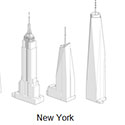
17 October 2016 | New York City
X Information Modeling: Data-Driven Decision Making in the Design of Tall Buildings
This presentation outlined X-Information Modeling or XIM, a method of data-driven decision-making for the design of tall buildings. Developed over its application on more than...
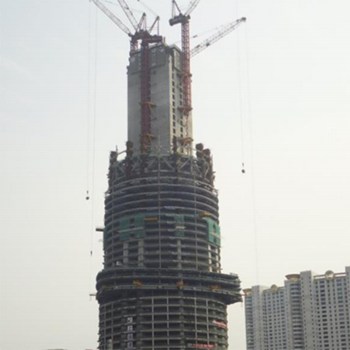
01 September 2018
Developments of Structural Systems Toward Mile-High Towers
Kyoung Sun Moon, Yale University School of Architecture
Tall buildings which began from about 40 m tall office towers in the late 19th century have evolved into mixed-use megatall towers over 800 m....
As the tallest building in the world from 1931 to 1971, the Empire State Building is the ancestor of all supertall skyscrapers and makes a lasting impression in the minds of all who have stood beneath, or atop, this international icon. Among the accolades and achievements that this tower claims, perhaps the most impressive is that it took less than 14 months to construct, a timeline that is unimaginable for a building of similar height today. Marveling at the ability of steel-framed buildings to support added weight, architects tested the material at a supreme scale. The art deco style of the building is appropriately capped with an ornamental spire, one that urban legend claims was designed as an anchorage point for dirigibles, but was actually built to ensure the building would be taller than the Chrysler Building. With its thousands of programmable LED lights, it has become one of the most memorable features of the building.
As part of its total redevelopment for 21st Century companies, in 2009 a $106 million energy efficiency retrofit was launched, which has transformed it into one of the most sustainable buildings in the world of any age. These upgrades realize a yearly savings of $4.4 million in energy and operational costs. The retrofit ranged from upgrades to efficient MEP systems to the reconstruction of all 6,514 windows into units that have 400% the thermal performance of normal dual pane windows; from the installation of redundant fiber optics building-wide to the creation of new public areas and amenities; and more. The Empire State Building remains a ground-breaking office property in the national and global real estate market. It was the tallest LEED certified building in the United States when it was awarded the designation in 2011. Not once, but twice has this building shown the world new possibilities in the tall building world: first, with its achievement in sheer height and speed of construction, and second, with its rebirth as a sustainable building. It will continue to be a prime example of how a world-class tower can continue to maintain its iconic status in a changing world.
Tallest building in the world 1931 - 1972. Preceded by the Chrysler Building and surpassed by One World Trade Center
On July 28, 1945, a B-25 bomber crashed into the north side of the building between the 79th and 80th floors, killing 14 people.
Featured in dozens of films, most notably; "King Kong" in 1933 and 2005.
It took just under 15 months from January 1930 to May 1931 to construct.

17 October 2016 | New York City
X Information Modeling: Data-Driven Decision Making in the Design of Tall Buildings
This presentation outlined X-Information Modeling or XIM, a method of data-driven decision-making for the design of tall buildings. Developed over its application on more than...
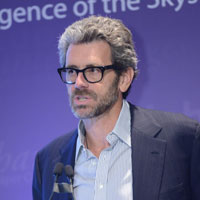
26 October 2015 | New York City
A Landmark Sustainability Program for the Empire State Building
This presentation underscores the extraordinary commitment that Empire State Realty Trust, Inc. has made to establish the Empire State Building as one of the most...

26 October 2015 | New York City
Anthony Malkin of Empire State Realty Trust is interviewed by Chris Bentley during the 2015 CTBUH New York Conference at the Grand Hyatt New York....

19 September 2012 | New York City
New Skins for Skyscrapers: Anticipating Façade Retrofit
The existing building stock in some regions accounts for nearly as much energy consumption and carbon emissions as the transportation and industrial sectors combined. Existing...

22 October 2009 | New York City
Interview: The Green Retrofit of the Empire State Building
Dan Probst of Jones Lang LaSalle is interviewed by Jeff Herzer during the 2009 CTBUH Chicago Conference at Illinois Institute of Technology, Chicago. Dan talks...

03 March 2008 | New York City
Material-Saving Design Strategies for Tall Building Structures
Kyoung Sun Moon from the University of Illinois at Urbana-Champaign discussed stiffness-based design methodologies for tall building structures at the CTBUH 8th World Congress in...

01 September 2018
Developments of Structural Systems Toward Mile-High Towers
Tall buildings which began from about 40 m tall office towers in the late 19th century have evolved into mixed-use megatall towers over 800 m....
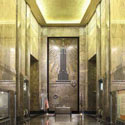
26 October 2015
A Landmark Sustainability Program for the Empire State Building
This paper underscores the extraordinary commitment that Empire State Realty Trust, Inc. has made to establish the Empire State Building as one of the most...

22 October 2015
New York: The Ultimate Skyscraper Laboratory
A timeline of skyscraper completions in New York uncannily resembles the boom and bust cycles of the United States in the 20th and early 21st...

24 August 2015
World’s Highest Observation Decks
Perhaps no element of a tall building is more closely related to the pure pleasure of standing high in the sky and taking in the...

01 November 2013
Confronting the Question of Demolition or Renovation
Crumbling façades, asbestos, and outdated elevators are often cited as reasons to tear down tall buildings and create new skyscrapers. However, renovating a tall building...
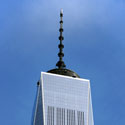
27 January 2012
Debating Tall: A Supertall Future in the US?
In 1990, only 11 buildings in the world could be counted as a “supertall” (defined as a building over 300 meters tall), and all but...

01 August 2011
New York’s dramatic skyline, over a century in the making, has for years been the envy of cities around the world. From the very birth...

13 November 2010
Includes records of the tallest buildings/structures according to function and structural material, the highest spaces according to function, and some lesser-known titles such as the...

06 November 2010
The world’s tallest buildings have always been more about expression rather than necessity or a solution to any problem. Being the visible landmarks that they...

12 June 2008
The Tallest Buildings in the World: Past, Present & Future
Over time, the average height of the 100 tallest buildings in the world has been steadily increasing. However, by 2010, this average height will have...
13 October 2016
The Council is pleased to announce the Top Company Rankings for numerous disciplines as derived from the list of projects appearing in 100 of the World’s Tallest Buildings.
28 October 2015
CTBUH 2015 delegates toured the Empire State Building as the most iconic skyscraper and its retrofit into the today's environment-aware society.
26 October 2015
The reception provided attendees an opportunity to meet and network with their fellow delegates in the incredible setting of the 80th Floor of the historic Empire State Building.
17 September 2015
The CTBUH Urban Habitat / Urban Design Committee organized guided walking tours of 16 cities around the globe, focusing on urban habitats around tall buildings.
4 October 2011
New York’s dramatic skyline, over a century in the making, has for years been the envy of cities around the world. From the very birth of the tall building typology, New York has been at the forefront of the scene.
Subscribe below to receive periodic updates from CTBUH on the latest Tall Building and Urban news and CTBUH initiatives, including our monthly newsletter. Fields with a red asterisk (*) next to them are required.
View our privacy policy